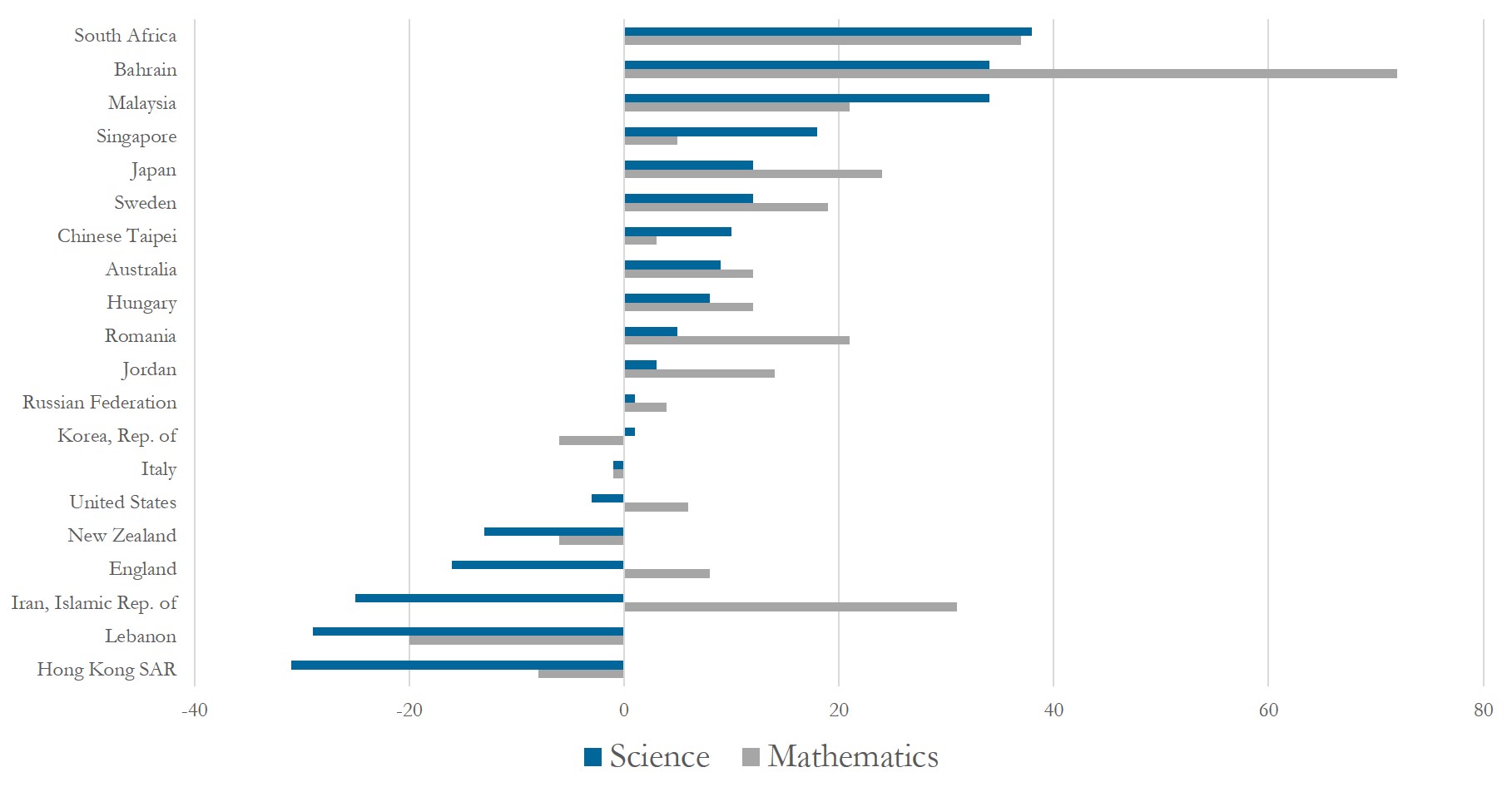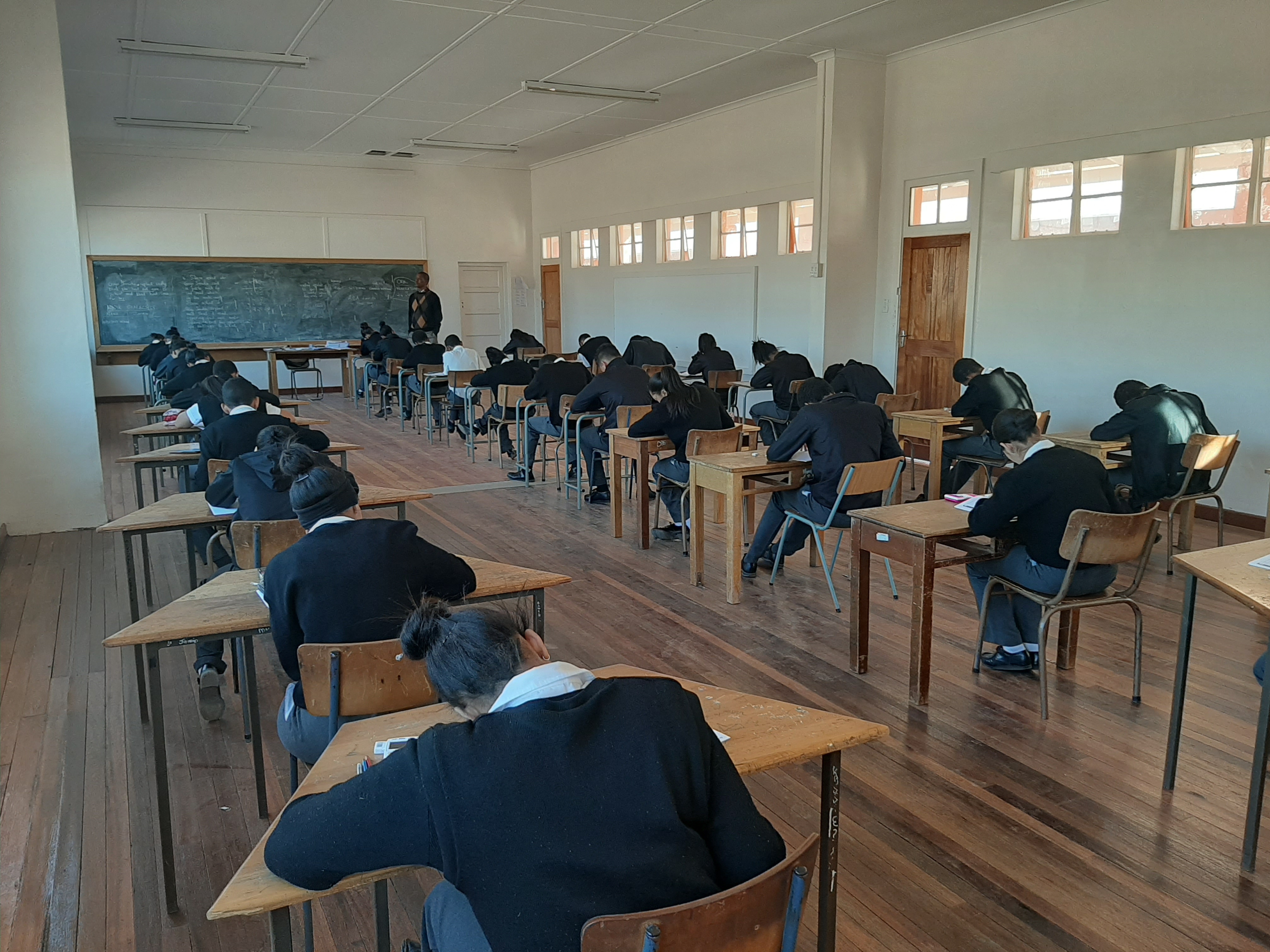Learners whose teachers linked new lessons to prior knowledge achieve significantly better results in maths and science, according to the 2019 Trends in International Mathematics and Science Study (TIMSS) South Africa, coordinated by the HSRC’s Dr Vijay Reddy. The cross-country assessment measures countries’ educational outcomes over time.
The question of how to improve educational outcomes has been central to efforts to tackle enduring poverty and inequality in post-apartheid South Africa. Although South Africa spends a relatively large fraction of its public expenditure on education (6.5% of GDP in 2019, compared to a 2017 world average of 4.5%), educational outcomes remain among the poorest of countries participating in TIMSS. (Currently, 64 countries participate in the grade 4/5 assessment, and 46 participate in the grade 8/9 assessment.)
However, data from TIMSS also show that South Africa’s performance has been steadily improving, said HSRC researchers at a recent webinar showcasing findings from the 2019 assessment. Albeit starting from a low base, South Africa achieved the highest rate of improvement in maths, and the second highest in science, between 2011 and 2019. (See figure 1.)

Despite this, the HSRC’s Dr Lolita Winnaar noted, the rate of improvement appeared to be slowing down, with little improvement recorded in 2019. “[A]s a country we need to work towards improving the rate of change,” she said.
Wide distribution of scores
The assessment showed a wide range of grade 5 and 9 performance scores within South Africa – particularly for science – with incremental mean improvements between the assessments in 2003, 2011, 2015 and 2019. The distribution in scores reflects inequalities in maths and science, Winnaar explained.
“Ideally, we would want this distribution to be narrower, meaning that there are smaller differences between your low performing, and your high performing [learners]”.
The TIMSS 2019 data show that educational achievement remains socially graded, with a large gap between fee-paying and non-paying schools. For grade 9s of no-fee schools, 72% fell below the minimum competency required for the grade, compared with just 33% of learners in fee-paying schools, Winnaar said. And while 9% of fee-paying grade 9s scored ‘advanced’ or ‘very high’ scores, no kids in no-fee schools achieved this distinction.
What other factors affect performance? TIMSS data allowed researchers to examine the impact of teachers, school leadership and management style, and classroom context and curriculum, among other factors. According to HSRC senior research manager Fabian Arends, most of South Africa’s maths and science teachers have the requisite knowledge to teach. TIMSS data revealed that 80% of grade 9 maths and science teachers hold at least a bachelor’s degree, he said.
Teacher training is often touted as a possible solution to poor educational outcomes. However, Arends said that teacher training was not correlated with improved learner performance, a finding that warranted investigation.
“We can observe that our educators, in comparison with the international average, actually attend more professional development activities,” he said. “Especially in mathematics content curriculum and assessment”.

In the classroom
To unpack how the quality of teaching might drive performance differences, the assessment asks children specific questions about their classroom environment and the clarity of instruction.
A bivariate analysis (which does not control for other factors) revealed that the learners of teachers who said they linked new content to prior knowledge scored significantly higher than their peers, revealed Arends. Encouragingly, the majority (77%) of teachers reported doing this. Other items in the supportive environment category, such as ‘encourage classroom discussion’ did not significantly predict performance.
To measure instructional clarity, researchers asked learners whether they agreed with statements like ‘I know what my teacher expects me to do’, ‘my teacher is easy to understand’ and ‘my teacher explains a topic again when we don’t understand’. A composite score of all the items in this category was also significantly linked to better performance, although the effect is much smaller.
The researchers were also interested in cognitive activation: an educator’s ability to challenge learners cognitively. Questions gauging cognitive activation included whether the teacher related lessons to the learners’ daily lives, brought interesting materials to class, or asked learners to explain their answers. This category was not correlated with performance, Arends said.
At the school level, TIMSS 2019 also looked at the role of principals’ leadership on learners’ achievements. In South Africa, the role of the principal has moved from one of management and administration to one focussed on improving teaching and learning, said the HSRC’s Dr Andrea Juan. This is in the context of dismantling the apartheid education system by implementing new policies and programmes to expand and integrate schools.
The researchers measured management style by asking principals about their experience and training; whether they kept an orderly environment; and their instructional leadership. Juan noted that in private and no-fee schools, most principals had shorter tenures. The study found that principals with longer tenures (6 years or more) were correlated with higher learner outcomes in independent schools only.
“[I]nternational literature shows that principals with more than six years of experience had an association with higher achievement,” Juan said. “So why don’t we see this in public – no-fee- and fee-paying – schools?”
It is worth noting that cross-sectional analysis does not determine the direction of causation: in the case of principal tenure, for example, principals in independent schools may retain their positions because they are good at their jobs, rather than vice versa. Other factors affecting tenure (such as labour law) might also be at play.
Other TIMSS-estimated factors that might drive learner achievement are home influences, early educational environment and classroom context and curriculum. Juan noted a strong positive correlation between reported early childhood learning activities (based on parents’ responses to a home questionnaire) and children’s’ later educational outcomes.
Author: Andrea Teagle, a science writer in the HSRC’s Impact Centre
ateagle@hsrc.ac.za
Researcher: Dr Vijay Reddy, Principal Investigator and National Research Coordinator of TIMSS South Africa.
VReddy@hsrc.ac.za


